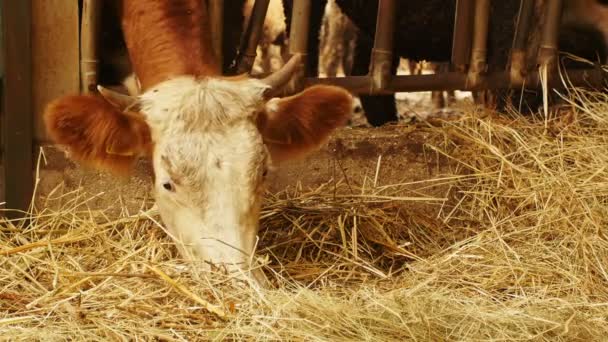Alternative feeds could help with hay shortage
Combine a short and expensive hay supply with a snowy winter, and producers are left scrambling as they work to keep cows in condition until spring.
Denise Schwab, Iowa State University Extension beef specialist in Vinton, Iowa, says there are several options when it comes to replacing hay.
She says limiting hay intake and supplementing feed with other fiber sources such as cornstalks, poor-quality hay or straw may be an option. Feeding wheat midds or soybean hulls might also be an option, although those items may be more expensive and difficult to find in parts of the Midwest.
Research from Purdue University suggests limiting hay access to three to five hours per day is possible when trying to make tight supplies last until the grass is green, Schwab says.
“If you do something like that, you’re going to have to provide supplemental energy and protein sources,” she says. “If you know you are going to be short of hay, get ahead of it and work with your nutritionist as soon as possible.”
Julie Walker, Extension beef specialist with South Dakota State University, says research indicates cows can thrive on less hay in the winter.
“You can back off on the hay and supplement with corn or a protein supplement, and they are going to gain weight and stay in condition,” she says. “It’s not going to affect the birth weight of her calf, and you will not have any additional health stress on the calf either.”
Walker says poor-quality hay may be an option.
“You can go pretty far back into the hay pile and still use most of it,” she says, adding any moldy hay should be avoided.
Feeding anything other than hay is going to create additional labor needs, Walker adds.
“You have to be able to deliver the feed all at once,” she says. “If you don’t, the older cows will work their way through the better feed before you can bring out the next load.”
Walker also suggests separating heifers from the older cows.
“You want to make sure those younger, smaller cows are getting the feed they need,” she says.
Some producers may move gestating cows into a drylot system. Schwab says in southern Iowa and Missouri, many producers keep cows on pasture for calving.
Producers in the northern two-thirds of the state and further north may keep cows on cornstalks or place them in a drylot, she says.
“If you do that, you need to make sure cows have access to feed bunks or tires for feeding,” Schwab says. “Feeding on frozen ground is a good option, but you don’t want to do that in the mud.”
She says producers need to be careful to make sure cows are not overconditioned. Lactating cows are going to need more feed for a variety of reasons.
“That nursing cow is going to have a larger feed intake and have higher energy and protein needs,” Schwab says. “If a cow doesn’t eat enough, she’s not going to produce enough milk for her calf, and she’s going to have problems cycling and rebreeding this summer.
“You want to get as close as you can to getting her the groceries you need. If you don’t, it’s going to affect that cow beyond just this year.”
SEEDS by materials FarmerToday
Головні новини Seeds та агроідеї для зростання вашого бізнесу в Telegram Facebook InstagramYoutube та Підписуйтесь!



